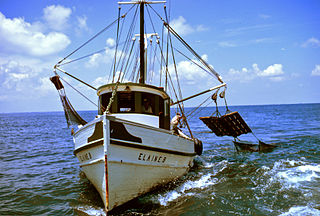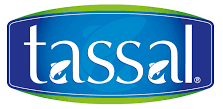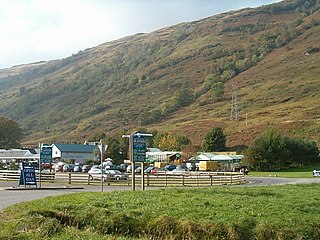Aquaculture, also known as aquafarming, is the controlled cultivation ("farming") of aquatic organisms such as fish, crustaceans, mollusks, algae and other organisms of value such as aquatic plants. Aquaculture involves cultivating freshwater, brackish water, and saltwater populations under controlled or semi-natural conditions and can be contrasted with commercial fishing, which is the harvesting of wild fish. Aquaculture is also a practice used for restoring and rehabilitating marine and freshwater ecosystems. Mariculture, commonly known as marine farming, is aquaculture in seawater habitats and lagoons, as opposed to freshwater aquaculture. Pisciculture is a type of aquaculture that consists of fish farming to obtain fish products as food.

The fishing industry includes any industry or activity that takes, cultures, processes, preserves, stores, transports, markets or sells fish or fish products. It is defined by the Food and Agriculture Organization as including recreational, subsistence and commercial fishing, as well as the related harvesting, processing, and marketing sectors. The commercial activity is aimed at the delivery of fish and other seafood products for human consumption or as input factors in other industrial processes. The livelihood of over 500 million people in developing countries depends directly or indirectly on fisheries and aquaculture.

Gorton's of Gloucester is a subsidiary of Japanese seafood conglomerate Nippon Suisan Kaisha, Ltd., producing fishsticks and other frozen seafood for the retail market in the United States. Gorton's also has a North American food service business which sells to fast-food restaurants such as McDonald's, and an industrial coating ingredients operation. It has been headquartered in Gloucester, Massachusetts, since 1849.

Tassal is a Tasmanian-based Australian salmon farming company founded in 1986. It was listed on the Australian Securities Exchange (ASX) from 2003 until 2022. Tassal is the largest producer of Tasmanian grown Atlantic salmon, supplying salmon to both domestic and international markets. In November 2022, it was acquired by Canadian seafood company Cooke Inc. and delisted from the ASX.

Agriculture, forestry, and fishing form the primary sector of industry of the Japanese economy together with the Japanese mining industry, but together they account for only 1.3% of gross national product. Only 20% of Japan's land is suitable for cultivation, and the agricultural economy is highly subsidized.
Mowi ASA, known as Marine Harvest ASA until January 1, 2019 and as Pan Fish prior to February 6, 2007, is a Norwegian seafood company with operations in a number of countries around the world. The company's primary interest is fish farming, primarily salmon, the operations of which are focused on Norway, Scotland, Canada, the Faroe Islands, Ireland and Chile. The group has a share of 25 to 30% of the global salmon and trout market, making it the world's largest company in the sector. Mowi also owns a 'value added processing' unit, which prepares and distributes a range of seafood products, and a number of smaller divisions.
Sustainable seafood is seafood that is caught or farmed in ways that consider the long-term vitality of harvested species and the well-being of the oceans, as well as the livelihoods of fisheries-dependent communities. It was first promoted through the sustainable seafood movement which began in the 1990s. This operation highlights overfishing and environmentally destructive fishing methods. Through a number of initiatives, the movement has increased awareness and raised concerns over the way our seafood is obtained.

Loch Fyne Oysters is a seafood and meat company that operates on the banks of Loch Fyne, Scotland. The company created the Loch Fyne Restaurants chain, which was later sold to Greene King. Loch Fyne Oysters still owns the Loch Fyne brand and supplies its products to the restaurant chain.

Toyo Suisan Kaisha, Ltd., best known as Toyo Suisan, is a Japanese company specializing in ramen noodles, through its Maruchan brand, seafood and frozen and refrigerated foods. It is the fourth-largest transnational seafood corporation.
This page is a list of fishing topics.
Aker BioMarine is a Norwegian fishing and biotech company providing krill products through a fully documented and secured catch and process chain. Based in Oslo, Aker BioMarine is part of the Aker Group and the company also created Eco-Harvesting.

The coastline of the Russian Federation is the fourth longest in the world after the coastlines of Canada, Greenland, and Indonesia. The Russian fishing industry has an exclusive economic zone (EEZ) of 7.6 million km2 including access to twelve seas in three oceans, together with the landlocked Caspian Sea and more than two million rivers.

Aquaculture started to take off in New Zealand in the 1980s. It is dominated by mussels, oysters and salmon. In 2007, aquaculture generated about NZ$360 million in sales on an area of 7,700 hectares. $240 million was earned in exports.
Maruha Nichiro Corporation is a Japanese seafood company, beginning its operation in 1880, when its founder, Ikujiro Nakabe, began a fish sale business in Osaka. The company is the largest of its kind in Japan, with Nippon Suisan Kaisha and Kyokuyo Co., Ltd. as its main competitors.
The following outline is provided as an overview of and topical guide to fisheries:

Feng Sushi is a UK-based restaurant chain known for advocating sustainable fish farming. The company was founded in 1999 by chef Silla Bjerrum and chef Jeremy Rose, with restaurant entrepreneur Luke Johnson the majority owner since 2010.

Fisheries law is an emerging and specialized area of law. Fisheries law is the study and analysis of different fisheries management approaches such as catch shares e.g. individual transferable quotas; TURFs; and others. The study of fisheries law is important in order to craft policy guidelines that maximize sustainability and legal enforcement. This specific legal area is rarely taught at law schools around the world, which leaves a vacuum of advocacy and research. Fisheries law also takes into account international treaties and industry norms in order to analyze fisheries management regulations. In addition, fisheries law includes access to justice for small-scale fisheries and coastal and aboriginal communities and labor issues such as child labor laws, employment law, and family law.

Surimi is a paste made from fish or other meat. It can also be any of a number of East Asian foods that use that paste as their primary ingredient. It is available in many shapes, forms, and textures, and is often used to mimic the texture and color of the meat of lobster, crab, grilled Japanese eel, or shellfish.

Sir Graeme Thomas Harrison is a New Zealand business executive. He was the driving force behind ANZCO Foods, which is New Zealand's fifth-largest exporter. He was at the helm of ANZCO Foods for 34 years until his retirement in 2018.
Taneko Suzuki was a Japanese biochemist and nutritionist who was an expert in protein chemistry and development of foods from fish proteins. Her work on transforming pollock into a hamburger-like substance received the Minister of Agriculture, Forestry and Fisheries Award in 1980. She was also honored with the Achievement in Processing and Technology Award of the Japanese Society of Fisheries Science in 1980, and the Director's Medal from the Japan Science and Technology Agency Commissioner in 1985.












